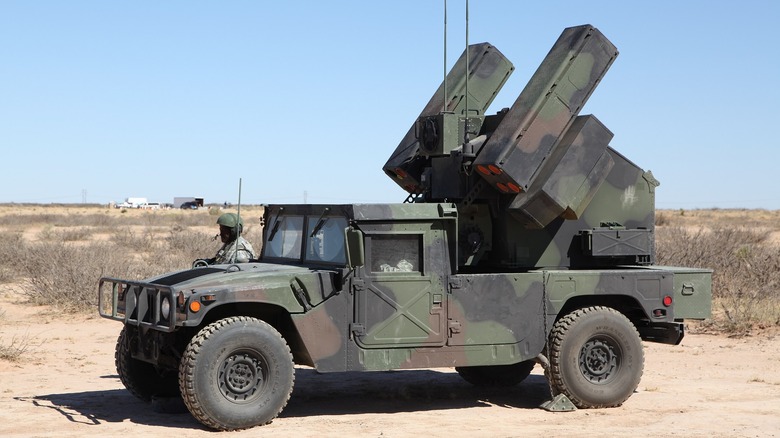Avenger Weapon System: The History Behind One Of The US Military's Best Anti-Air Vehicles
It may sound like something Tony Stark created to help the Avengers defeat their latest adversary, but it's not. However, the Avenger is a lightweight, super portable, surface-to-air weapons system that packs a punch like a superhero, and is a critical component of the U.S. Army's overall defense strategy.
The Avenger Air Defense System — also called the AN/TWQ-1 Avenger — was initially developed by Boeing Aerospace in the early 1980s as a private project, with hopes that the military would take notice. It wasn't much of a gamble, as Boeing has been a military contractor since building "flying boats" for the Navy during World War I.
The Army indeed noticed, and Boeing delivered the first Avengers in 1988 to replace the aging Vulcan anti-aircraft guns (M163 and M167). While both the Marine Corps and National Guard later adopted it, it was eventually phased out by the Marines. The National Guard, however, still uses most of the Avenger systems today.
At the heart of the Avenger is its mobility and adaptability. The battle turret was designed to fit on HMMWV Humvees, including the M998, M1026, or M1097. However, it's versatile enough to be attached to several other military trucks, trailers, and tracked vehicles.
Since it can operate remotely, it can be removed from a vehicle and act as an autonomous stand-alone stationary module, as is the case with its role with Homeland Defense in protecting the capital region in Washington, DC.
[Featured image by Capt. Brian Hare via Wikimedia Commons | Cropped and scaled | Public Domain]
A Herculean defender around the globe
Typically, the Avenger Air Defense System is operated by a driver in the Humvee, and a gunner sitting inside the 360-degree rotating turret. The weapon is gyroscopically stabilized, so the turret can maintain a target lock no matter what the Humvee is doing.
It's armed with quad missile pods that can fire up to eight FIM-92 Stingers, each with a range of over 3.5 miles, and also has a .50 caliber M3P automatic machine gun. This shoot-on-the-move system was designed to engage low-altitude enemy drones, missiles, and both rotary and fixed-wing aircraft.
The entire system can be airlifted by a UH-60L helicopter, or when mounted to a pallet, parachuted from a moving C-130 Hercules. The Avenger can operate day or night as well. It's equipped with a host of advanced targeting systems — including FLIR (Forward Looking Infrared Receiver), an LFR (Laser Range Finder), the IFF (Identification Friend-or-Foe) System — meaning the Avenger functions in virtually any weather condition with minimal error.
If that wasn't enough, it's also tied into Forward Area Air Defense Command and Control (FAAD C2), a system with over 25 sensors that tracks friendly and enemy aircraft, missiles, drones, mortar, and rocket rounds. Think of it as JARVIS in Iron Man's suit, but for a mounted gun.
In March of 2015, the Modification Service Life Extension Program (MOD-SLEP) was approved, which should keep the Avenger operational through 2031. Currently, the Ukrainian army is using 12 Avenger systems to protect major cities and ground forces from Russia.
